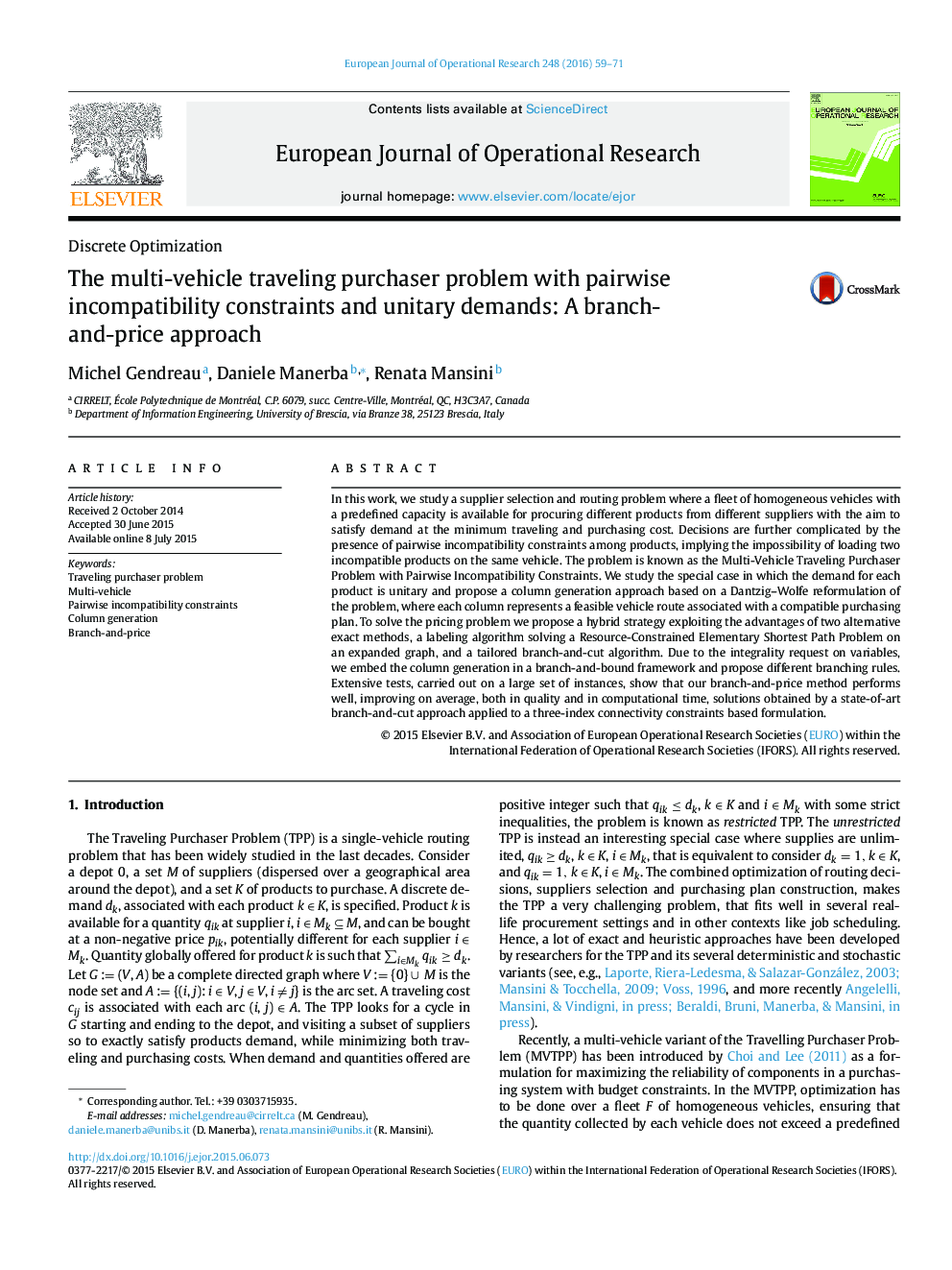| Article ID | Journal | Published Year | Pages | File Type |
|---|---|---|---|---|
| 479458 | European Journal of Operational Research | 2016 | 13 Pages |
•We study the unitary demand case of the multi-vehicle TPP with incompatibilities among products.•We propose a new set-covering formulation and a branch-and-price approach.•We present a hybrid procedure combining two exact methods for solving the pricing problem.•Our method outperforms an existing branch-and-cut both in solution quality and CPU time.•Our method shows good performance even when the number of vehicles and PICs grows.
In this work, we study a supplier selection and routing problem where a fleet of homogeneous vehicles with a predefined capacity is available for procuring different products from different suppliers with the aim to satisfy demand at the minimum traveling and purchasing cost. Decisions are further complicated by the presence of pairwise incompatibility constraints among products, implying the impossibility of loading two incompatible products on the same vehicle. The problem is known as the Multi-Vehicle Traveling Purchaser Problem with Pairwise Incompatibility Constraints. We study the special case in which the demand for each product is unitary and propose a column generation approach based on a Dantzig–Wolfe reformulation of the problem, where each column represents a feasible vehicle route associated with a compatible purchasing plan. To solve the pricing problem we propose a hybrid strategy exploiting the advantages of two alternative exact methods, a labeling algorithm solving a Resource-Constrained Elementary Shortest Path Problem on an expanded graph, and a tailored branch-and-cut algorithm. Due to the integrality request on variables, we embed the column generation in a branch-and-bound framework and propose different branching rules. Extensive tests, carried out on a large set of instances, show that our branch-and-price method performs well, improving on average, both in quality and in computational time, solutions obtained by a state-of-art branch-and-cut approach applied to a three-index connectivity constraints based formulation.
